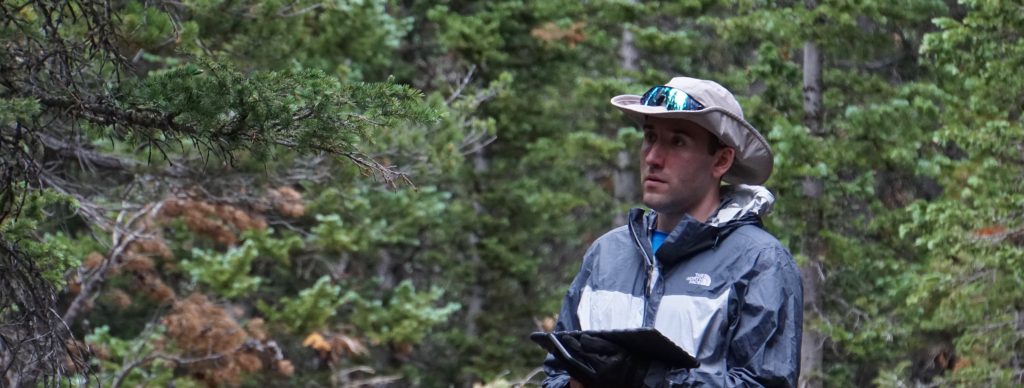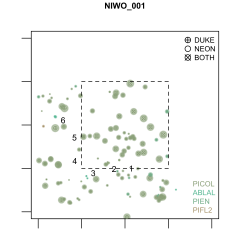Niwot Ridge (NIWO)
Chris Kilner, Amanda Schwantes, Jim Clark
4-8 July 2018
105.559 W, 40.042 N
Niwot Ridge is an LTER site administered through University of Colorado’s Institute of Arctic and Alpine Research (INSTAAR)at their Mountain Research Station. NEON sites extend from P. contorta and subalpine spruce-fir to above treeline.

The elevations of our studies occupy glacial till soils, with sand/silt to boulders, much of it weathered from gneiss bedrock. Our sampling was facilitated by Bill Bowman, the director of INSTAAR.
The sparse canopy at plot 1 is dominated by P. contorta, mostly serotinous, with scattered Picea engelmannii, and A. lasiocarpa. There is limited P. contorta recruitment in the stand, and to a lesser degree, P. engelmannii and A. lasiocarpa. Vaccinium dominates the understory.
Plot 2 supports a P. contorta canopy, almost entirely serotinous. There is some P. contorta recruitment. Vaccinium dominates the understory. Soils are relatively deep for this site, with scattered bedrock outcrops. Seed traps were installed, but the tree census is delayed until 2019.
Plot 5 is an open stand on a rocky slope with shallow soils, dominated by P. engelmannii, A. lasiocarpa, with some P. flexilis. P. flexilis were reproductive in the past, evidenced by cones on the ground, but not currently. There is some recruitment of P. engelmannii and A. lasiocarpa. Vaccinium is abundant. Six seed traps were installed. Diameters were taken on S and W blocks. Cone counts were completed on new trees and on NEON-censused trees.
Plot 7 is near a bottomland, with somewhat deeper soils. It supports dense P. engelmannii and A. lasiocarpa, with scattered P. contorta and a few P. flexilis. The understory supports some P. engelmannii and A. lasiocarpa recruitment.
Plot 9 is dominated by P. engelmannii and A. lasiocarpa, with some P. flexilis that are no longer reproductive. The understory is dominated by Vaccinium and supports P. engelmannii and A. lasiocarpa recruitment. Seed traps were installed, but the tree census is delayed until 2019.
Plot 10 is dominated by P. engelmannii and A. lasiocarpa, with some P. flexilis that are no longer reproductive. There is P. engelmannii and A. lasiocarpa recruitment in an understory that also includes Vaccinium.
Climate data:
Jennings K., T. Kittel, N. Molotch. 2019. Infilled climate data for C1, Saddle, and D1, 1990 – 2013, hourly.. Environmental Data Initiative. https://doi.org/10.6073/pasta/1538ccf520d89c7a11c2c489d973b232. Dataset accessed 1/31/2019.









